Change of Address Letter Template for Customers
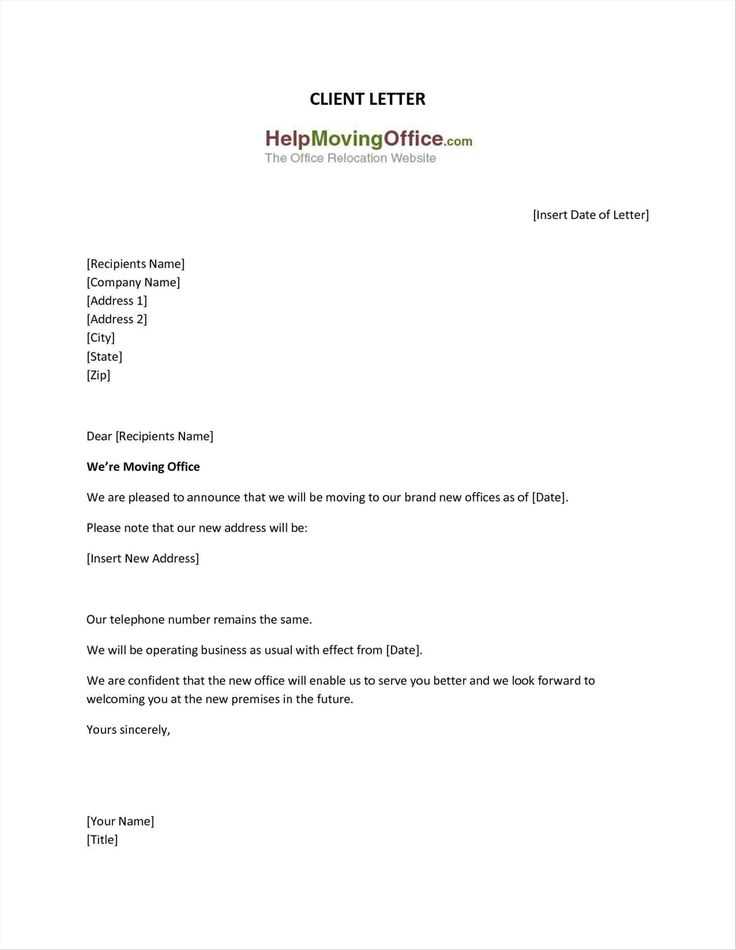
Communicating significant changes in your business’s location or contact details is crucial for maintaining a smooth relationship with your clients. Keeping them informed ensures no disruption in services or communication, which is vital for your company’s reputation and continued success.
Clear and timely notification about such changes helps clients adjust and continue their interactions without confusion. Crafting a well-written notification can make all the difference in maintaining trust and professionalism.
In this guide, we’ll provide a simple yet effective structure for informing your clientele. We’ll cover essential points that need to be included, how to keep the tone appropriate, and common pitfalls to avoid, ensuring your message is both clear and impactful.
Why You Need an Address Change Letter
Notifying your clients about a shift in your company’s location or contact details is essential for maintaining smooth operations. A well-crafted message ensures your clients can easily adapt to the new arrangements and continue their interactions with your business without confusion.
Failing to inform your clients promptly can result in delays, miscommunication, and even loss of business. Here’s why it’s necessary:
- Maintains Professionalism: Keeping your clients updated shows that your business is organized and attentive to their needs.
- Avoids Misunderstandings: A clear message prevents clients from sending inquiries or orders to the wrong place.
- Strengthens Relationships: Open communication builds trust and reassures clients that their experience remains a priority.
- Ensures Continuity: Prompt updates help ensure no interruptions in services or deliveries.
Key Elements to Include in Your Letter
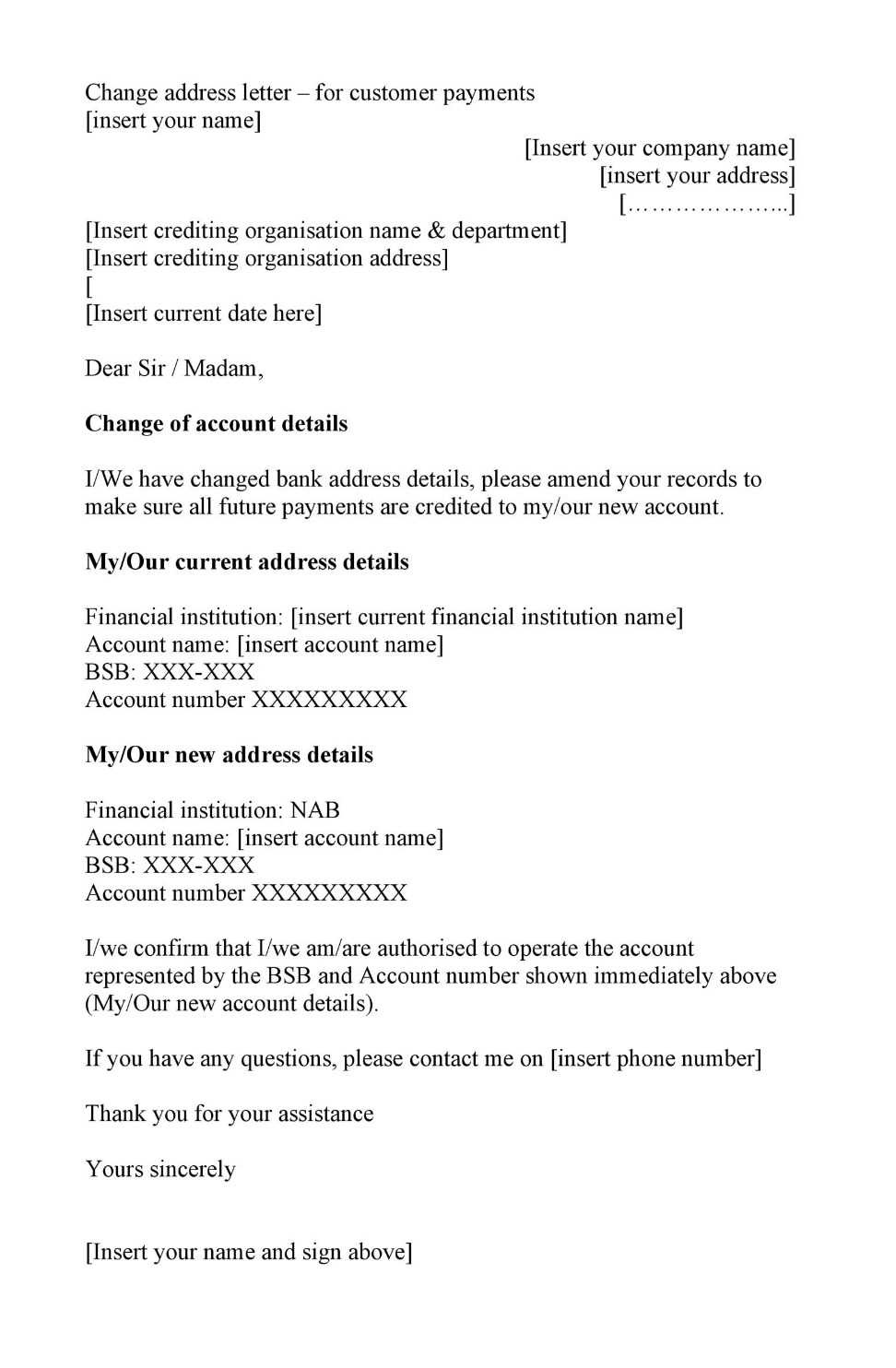
When notifying your clients about a change in your company’s location, it’s crucial to ensure that the communication is both clear and comprehensive. A well-structured message will include all the necessary details to avoid confusion and ensure a smooth transition.
Essential Information to Provide
Start by giving the exact date when the new arrangements will take effect. This allows your clients to plan accordingly and avoid any disruptions. Also, include both the old and new contact details for their reference.
Maintain a Professional Tone
While it’s important to share key details, the tone of the message should be polite and professional. A clear, concise message with a friendly tone helps maintain strong relationships and demonstrates respect for your clients’ time.
By addressing all necessary points and keeping the tone respectful, your clients will appreciate the transparency and clarity of your communication.
How to Personalize the Template
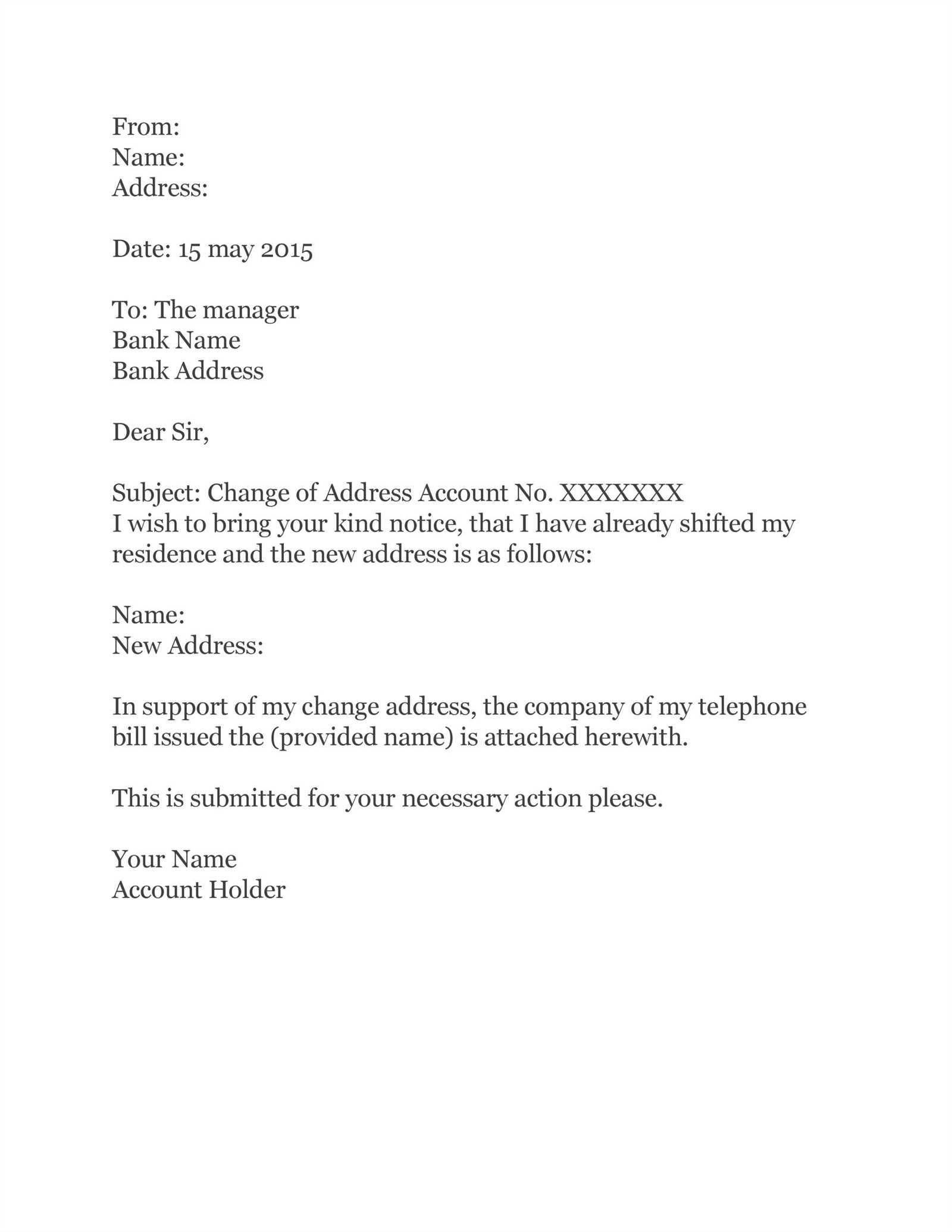
To ensure your message feels authentic and tailored to your audience, it’s important to customize the content for each recipient. Personalization shows that you value the relationship and can significantly improve client engagement.
Start by addressing each client by name in the opening. This small gesture makes the communication feel more personal and less like a generic update. Also, consider adding specific details relevant to the client, such as how the change will directly impact their experience or services.
Be sure to maintain a warm, friendly tone throughout. While it’s crucial to provide all necessary information, expressing gratitude for their continued business and support can further strengthen the bond.
By customizing the content, you ensure your message stands out and resonates with your audience, making the transition easier for them.
Common Mistakes to Avoid When Writing
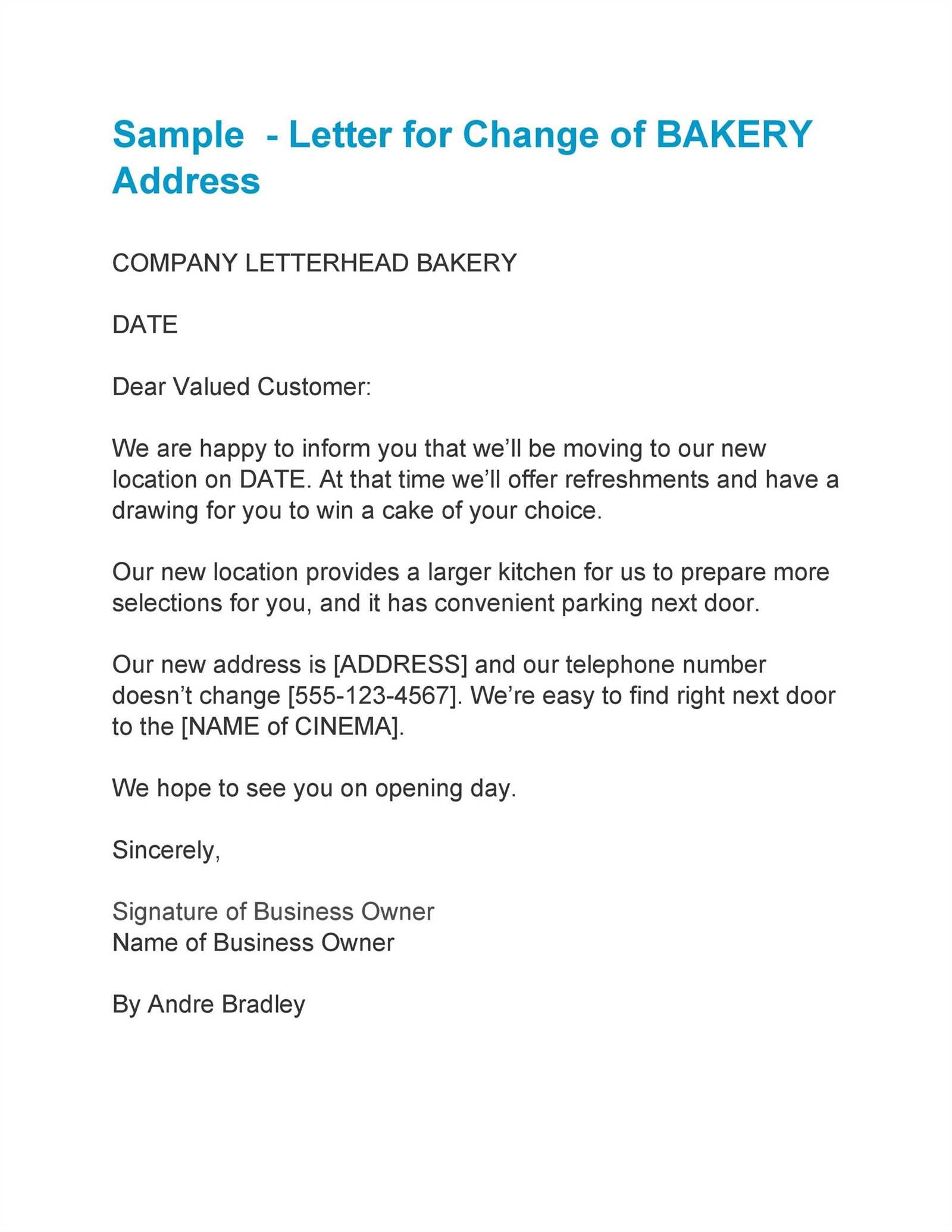
When informing clients about a shift in your business operations, it’s easy to make errors that could lead to confusion or a loss of professionalism. Being aware of these pitfalls can help you create an effective and clear message that gets the right points across.
One common mistake is failing to provide enough detail. Always ensure you include all relevant information such as the exact date of the change and how it might affect your clients. Omitting these can create unnecessary confusion.
Another mistake is using a tone that feels too impersonal. While it’s important to keep things professional, using a warm and approachable tone helps maintain the client relationship.
Finally, avoid sending the notification too late. The earlier you inform your clients, the better prepared they will be for the transition, preventing any miscommunications or disruptions in services.
Sending Your Address Change Effectively
Delivering important updates about your business’s new location or contact information requires careful planning to ensure that your clients receive the message in a timely and organized manner. Effective communication is key to a smooth transition, preventing misunderstandings and delays.
Choose the Right Communication Channel
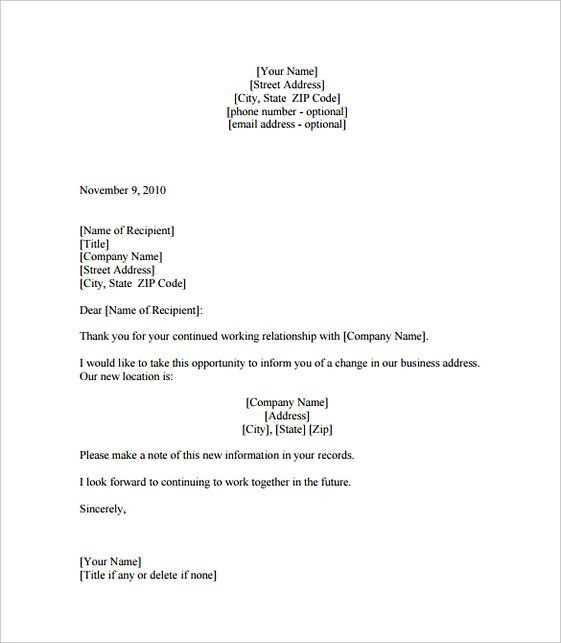
Sending the notification through the appropriate medium is crucial. Whether it’s via email, physical mail, or through your website, make sure your clients are familiar with the channel. Using multiple channels can help reach a wider audience and ensure the message is seen.
Timing Is Everything
It’s essential to send the update well in advance. This gives your clients time to adjust their expectations and plan accordingly. A timely notification allows your business to continue operating smoothly, without interruptions or confusion.
Follow-up reminders can also be helpful. Sending a second message closer to the effective date ensures that the change isn’t forgotten.
By carefully selecting the communication method and timing, you can ensure that the message reaches your clients effectively, minimizing any disruption to your relationship.
htmlEdit
Tips for a Professional Letter Tone
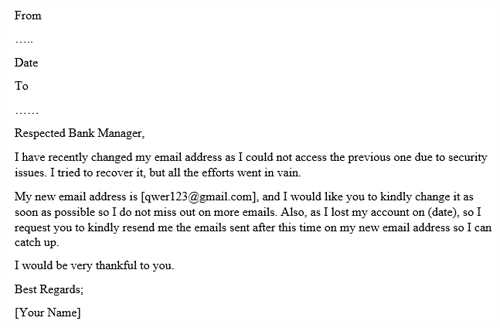
Maintaining a respectful and courteous tone is essential when communicating in a formal setting. Your message should reflect professionalism, instilling trust and clarity while avoiding any unnecessary informality. It’s important to keep the balance between warmth and formality, ensuring that the recipient feels respected and valued. A clear, concise, and respectful approach will help convey your point effectively without sounding too casual or overly stiff.
| Tip | Explanation |
|---|---|
| Use Polite Language | Choose courteous phrases that convey respect, such as “Please” and “Thank you.” This adds a touch of professionalism to your communication. |
| Avoid Overly Casual Phrases | Refrain from using slang or overly informal expressions. A more neutral tone ensures your message remains professional. |
| Be Direct and Clear | While maintaining politeness, ensure your message is easy to understand. Avoid unnecessary jargon or overly complex sentences. |
| Maintain a Neutral Tone | Stay neutral, especially when addressing sensitive matters. Avoid sounding too emotional or too harsh, keeping your communication composed. |